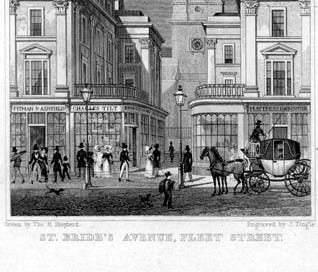Attwood's Confidential Inquiry Office
Parts of Henry George Attwood's life are very foggy, but one thing is clear: he was a successful private detective
Attwood's Confidential Inquiry Office operated from 4 and 6 Catherine Street, off the Strand, in central London. It was one of the private detection industry's successes, as it ran from at least 1884 until 1901.
An early advert for Attwood’s Confidential Inquiry Office (from the Warrington Examiner of 16/2/1884, public domain)
Attwood's was run by Henry George Attwood, who was born and bred in Wandsworth, South London. In the early 1880s, he described himself as a business agent, but, aside from his private detective work, this is the only other job he appears to have had (and it could well have been another name for his detective work). He was not a former policeman; his skills were purely the result of personality and an ability to read human behaviour. He prided himself on his discretion, offering help in tracing missing people, watching 'suspicious' people, and taking on divorce and other cases involving family matters. He aimed to turn round cases quickly, and by 1887, he was describing himself as the managing director of his agency. However, it isn't clear whether he worked alone or had a team of men working for him; he had office hours of 10am until 5pm daily, so presumably, when he was on a job, he might have had a clerk or secretary covering for him at least.
There is mystery in his origins. He is in the 1851 census for Wandsworth with his mother, Elizabeth, both visiting a butcher. Elizabeth, who was then 36, clearly gives her status as widow. However, the birth of George Henry Attwood (not Henry George, although he would use this combination of names professionally, and was usually known as Henry) was registered in Wandsworth in early 1843. It was registered without his mother's maiden name being stated, a tell-tale sign of illegitimacy. He is absent from both the 1861 and 1871 censuses - it is possible that his mother finally married within this time, and Henry was recorded under a stepfather's surname.
In 1878, aged 21, he married Sarah Rook Kersey, the semi-literate daughter of a publican turned labourer. On his marriage, he stated that his father was James Attwood, a tailor. There certainly was a James Attwood who worked as a tailor in Wandsworth at the time of George Henry's birth - but this Somerset-born man was living there with his wife Sarah (and would still be doing so four decades later) and was certainly not Henry's legitimate father.
Henry George Attwood and his new wife settled initially on the New Kent Road, where their eldest daughter Emily Elizabeth was born in 1878. Two more children would follow: George Edwin, born in Battersea in 1882, and Daisy Beatrice, born in Lambeth in 1888. By the time of Daisy's birth, Henry had become a private detective, maintaining his family in Battersea while he worked in Catherine Street.
One of the cases he was involved in was an 1891 divorce case, where he was engaged to watch a Mrs Sands at a property near his office - 17 Cecil Street. Mrs Sands was the former Juanita Franziska Praeger, a Viennese-born woman who worked as a singer and actress. She was from an incredibly artistic family: both her parents and her siblings were musicians, travelling across Europe; her uncle was a composer and music professor, and her cousin was an artist and art critic. In 1879 and 1880, she had played Beauty in a production of Beauty and the Beast in London, where she was described as 'a capital Beauty, singing and dancing with taste, and decidedly looking the part'; she was an attractive woman, but still in her mid teens.
St Bride’s Church, Fleet Street
On 15 August 1881, barely 16 years old, she had married Scots solicitor Warren Hastings Sands at the journalists' church - St Bride's on Fleet Street. The marriage ran into trouble, and the couple moved into separate lodgings - Warren in Marylebone, and Juanita at Cecil Street, where she boarded with artist James Sargent and his family. Juanita complained that her husband's finances had been in a poor state, and that he had, at one point, left her in Florida (where they had been living by the mid 1880s) with barely any money. However, Warren suspected his wife of having an affair with two other men - a Mr Barlow and a Charles Morrissey - and so employed Henry Attwood to 'shadow' her to find out the truth. His evidence helped Warren Hastings Sands gain a divorce; nine years later, in 1900, he remarried. Juanita, meanwhile, married again: not to either of the men she was accused of having affairs with, but to Daniel O'Connor-Beare, a diplomat who, throughout their 27 year marriage, served as consul or vice-consul in various parts of Africa and South America.
In 1900, the future of Attwood's in Covent Garden was put at risk; numbers 2, 4 and 6 Catherine Street were compulsorily purchased by London County Council, in order for them to be demolished as part of the process of building a new street, Aldwych, between Holborn and Strand. Attwood remained at Catherine Street until at least August 1900, but then relocated minutes away to 2 Tavistock Street, a road off Catherine Street. However, his last advert was placed in the London press in November 1903, at which point, Attwood's Confidential Inquiry Office, also known as Attwood's Detective Offices, disappeared. What Attwood did in his later years, I've not managed to find out; he was widowed in 1900 and may have died, aged 77, in 1920 - but between 1903 and 1920, his life remains in the shadows.





